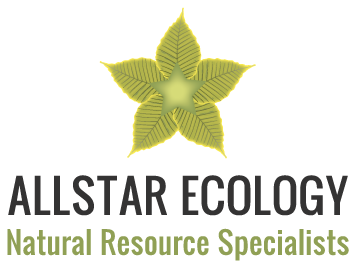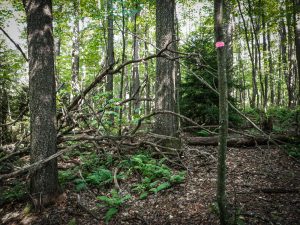Red Spruce Forests
Picea rubens, most commonly known as red spruce, was once abundant in the West Virginia highlands covering over one million acres until the late 1800s. Its natural ecosystem contributions include providing food and cover for many animals such as the Northern flying squirrel and the Cheat Mountain Salamander. The dense canopy cover found in a red spruce forest creates a moist cool climate that provides a thriving environment for many of its inhabitants. Streams are also shaded by this canopy which helps to regulate temperature and light, thus sustaining water quality and biodiversity.
Forest Stand Reduction
Starting in the mid-1700s, clearing of red spruce forests for grazing and farming by slash and burn practices started the reduction of these forest stands. The mass harvesting of the late 1800s for lumber, paper, and musical instrument manufacturing, destroyed most of the spruce forests by 1920. This reduced spruce stands in West Virginia to approximately five percent. Today, only about 30,000 acres of red spruce remain in the West Virginia highlands.
Red Spruce Restoration
In an effort to help restore red spruce forests, Allstar Ecology was contracted by the U.S. Forest Service to work in the Monongahela National Forest within 27 timber stands totaling 1,095 acres in both Randolph and Pocahontas Counties, West Virginia. These forest stands were dominated by hardwood tree species, but had a red spruce component within their understories.
Beginning in 2016, Allstar Ecology Environmental Scientists started treating selected species of trees with herbicide utilizing a hack-n-squirt application method. Targeted trees included shade tolerant species such as beech and striped maple that compete with the red spruce in the understory. After the treatment of each stand, the Forest Service planned timber sales of the overstory hardwood trees. The following regeneration should result in the reestablishment of red spruce in these stands.
The project was completed in July of 2018 with the expectation that red spruce populations in these treated areas will not only thrive, but will continue to expand to form large-scale red spruce forests where they once historically flourished to sustain this unique ecosystem.
Author: Jody Baker
Jody Baker grew up in Franklin, WV and has always had a love for the outdoors. He initially had plans to work in the automotive industry, but quickly changed his mind at a job fair where he learned about Natural Resources and Wildlife Technology at Garrett College. Since then, Jody has had a diverse professional background including working as a watershed technician at the WV Conservation Agency, a teacher’s aide at a biological field station in Costa Rica, a biological technician for a power plant research program, a sergeant in the US Army in Korea and Texas, a wildland firefighter, and various other environmental and natural resources responsibilities. He also worked with The Nature Conservancy to control invasive species in Maryland and volunteered at Aravaipa Preserve in Arizona.
Education: B.S., Wildlife and Fisheries Resources- West Virginia University | A.A.S. Natural Resources and Wildlife Technology – Garrett College



